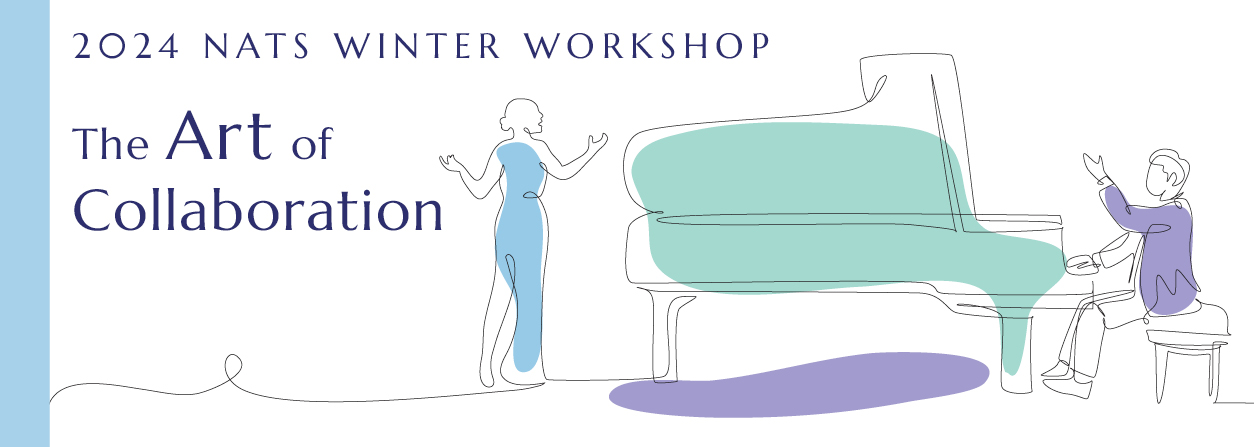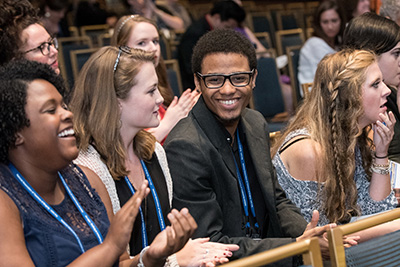What's New > The bel canto way with Rachelle Jonck
 |
Rachelle Jonck
|
Bel Canto Bootcamp founder Rachelle Jonck definitely knows a thing or two about beautiful singing.
Much of her career has been involved with the Italian tradition of bel canto singing. Jonck has collaborated with many singers as a pianist, coached many aspiring singers who have performed in the top opera houses of the world, and she also conducts. At the upcoming 2024 NATS Winter Workshop, “The Art of Collaboration,” Jonck will share her insights and wisdom in three sessions. The workshop runs January 6-8 at the Manhattan School of Music in New York City.
Jonck’s workshop sessions:
- Session 1: The Voice is Not a Piano: A Guide for Coaches
- Session 2: Versi Sciolti and Versi Lirici: Italian Diction Beyond the IPA
- Session 3: Ornamentation and Variation
We’re delighted that you are joining us for our 2024 Winter Workshop. Can you tell us a little about yourself and what you will be sharing during your sessions?
New York City has been my home base for the last 25 years. While my first love in music was the piano, my true love is the human voice. The first time I accompanied a song, I knew it was what I wanted to do every day! I found my niche in Italian opera — it is in the Italianate bel canto vocal line that I experience the essence of a musical line in its purest form. In a way, all three of my workshops are about that line. How to create it. And how to weave the surrounding orchestral texture around it.
What a beautiful sentiment. So, what kind of feedback do you hear from singers as they create ornamentation and variation on melismatic/coloratura passages?
The majority of singers are intimidated by ornamentation of slow music and even more by variation of fast music. They trust coaches or conductors to write ornamentation for them at best and copy what they hear on YouTube at worst. Thus, unfortunately, is lost the singer as the composer’s partner — the singer inspired by the framework the composer presents them with. Too often people thoughtlessly throw around the comment, “It is all in the score,” Truth is it is NOT all in the score. The singer needs extensive knowledge of historical notational conventions to bring the score to life. What are the notes, rhythms, dynamics, rubato that are NOT notated in the score literally, yet are implied and form an essential part of “the score”? The notation is NOT the music.
Ah, we’re going to learn so much. What are some of your “go-to” resources for Italian diction and poetry? How does your presentation go beyond the standard diction book and IPA?
The first and most important resource is the libretto or the poem. Seeing the structure of the poem is essential — unobscured by the musical setting, translations and IPA. Just the text. No subtext. Start there. How to make all the sounds of a language is only the first step — and that is the part IPA is mainly concerned with. What else do we need to know? Sounds go together to make syllables. Understanding syllabification is essential in understanding poetry and text distribution. Syllables go together to make words and words possess an inherent rhythm in most languages including Italian, German and English — this is LINGUAL RHYTHM. Words go together to create poetic lines which possess POETIC METER. In addition to the rhythm suggested by the musical notation, these two additional levels of rhythm are essential steps of diction teaching too often completely omitted from the syllabus.
Wow! Can’t wait to dive into more. Are there other sessions at the workshop that you are looking forward to attending yourself? Anything else you would like to add?
I’m looking forward to attending Warren’s classes and discussion panel. And, of course, I cannot wait to hear the young singers we will meet during the Winter Workshop! My current projects include a collaboration with Michigan State University to help singers study Italian operatic roles using a systematic approach that starts with the libretto (not the musical score). Bel Canto Boot Camp is embarking on a new study about the symbiotic relationship between vibrato and legato both in cantabile line and coloratura. In the spring I’m excited to spend quite a bit of time in Europe working with singers at various stages in their training — from university level (Guild Hall in London) to workshops with professional singers in Germany.
We’re so grateful for your time, and thank you for sharing this preview with us, Rachelle. See you at the workshop!
Don’t miss your chance to learn more from Rachelle Jonck live and in-person. There’s still time to register for the NATS Winter Workshop, "The Art of Collaboration," January 6-8 at the Manhattan School of Music in New York City.


